The Tesla Roadster is a purely electric two-seat sports car. It is the first production vehicle from Tesla and the first production vehicle in the world to be launched into space.
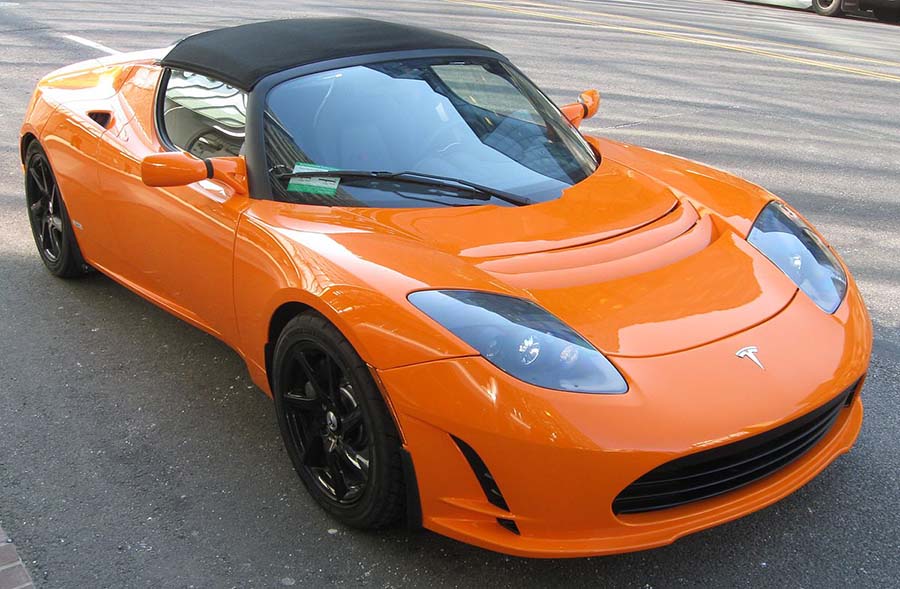
On July 24, 2006, Tesla presented the Roadster at a closed event at Santa Monica Airport in California. The small series production started after several delays on March 17th, 2008 and the regular production ended in 2012. During the production period approx. 2,450 roadsters were produced and sold worldwide. In the United States, its largest market, about 1,800 vehicles were delivered.
Drive
The two-seater sports car is powered by a 215 kW electric motor in the rear, producing maximum torque of 370 Nm (400 Nm for the sports version). The originally planned two-speed gearbox was rejected because the prototypes did not meet the requirements for the longevity of the vehicle. Instead, the final series form has a single-gear transmission. All Tesla Roadsters manufactured up to the time of the changeover initially received the two-stage pre-series transmission, which is locked in second gear to limit the mechanical load. As part of the manufacturer’s guarantee, this solution was later replaced with the input transmission for all vehicles delivered in this way.
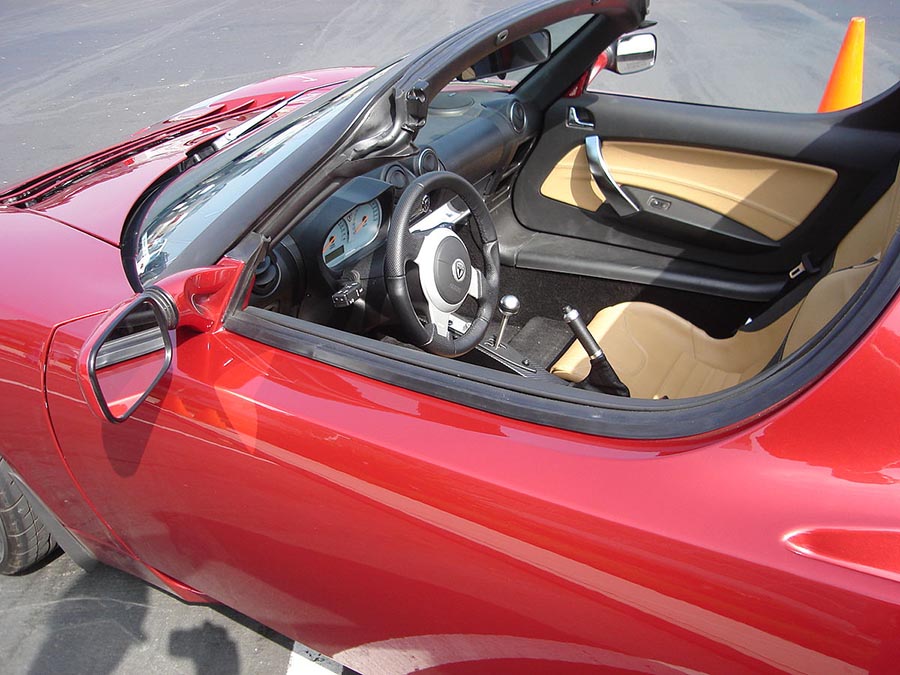
With the final transmission, the vehicle reaches 100 km/h in about 3.7 seconds, the models previously delivered required 5.7 seconds. To protect the transmission and limit the battery load, the Roadster is electronically limited to the top speed of 201 km/h (125 mph).
Chassis and Body
The roadster was developed together with AC Propulsion and Lotus. The body unmistakably bears the design signature of the British sports car manufacturer Lotus, whose factory in Hethel also took over series production. The landmark was the Lotus Elise, from which many components were taken over. Both vehicles have the same aluminum frame that the Danish supplier Hydro Aluminum developed for Lotus. The frame weighs only 65 kg and is not welded, but glued and riveted. This frame was also used on the Opel Speedster. All wheels are individually suspended on double wishbones. The body is carbon fiber reinforced polymer.
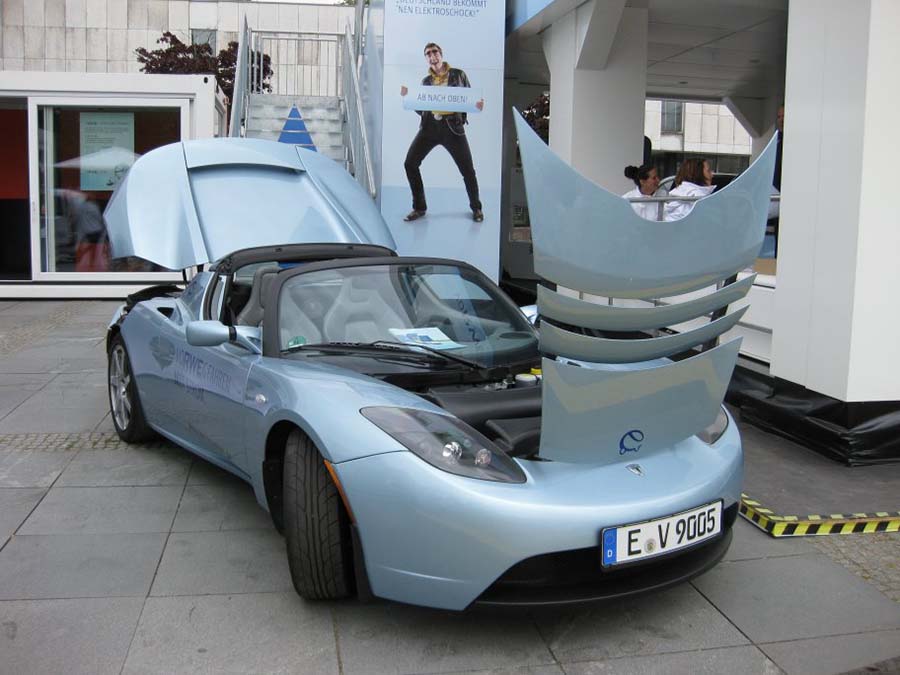
The car is 3.94 m long, 1.87 m wide and weighs about 1240 kg.
The soft top can be replaced by a hardtop, which was available at an additional cost.
Energy Storage
The energy storage consists of 6,831 cells of commercially available lithium-ion batteries, size 18650, which is also used for laptops. The battery stores 56 kWh (approx. 20% charge loss, therefore around 70 kWh is required for a charge), and has a nominal voltage of 400 volts. The entire battery consists of eleven plates connected in series, each containing nine blocks also connected in series; 69 cells are connected in parallel in each block (11S 9S 69P). Each battery cell is 65 mm long and has a diameter of 18 mm. The entire package of 6831 cells weighs about 408 kg. Each cell has two fuses, one on the anode and one on the cathode. The entire battery pack is cooled by a mixture of water and glycol.
The manufacturer promises a range of 350 km according to the European “Electric Vehicle Combined Cycle ”, and EPA approved range of 245 miles per charge. The ranges observed in practice were between 200 km and 501 km depending on driving style. An upgrade to the Roadster 3.0 gives the electric car a range of up to 643 kilometers.
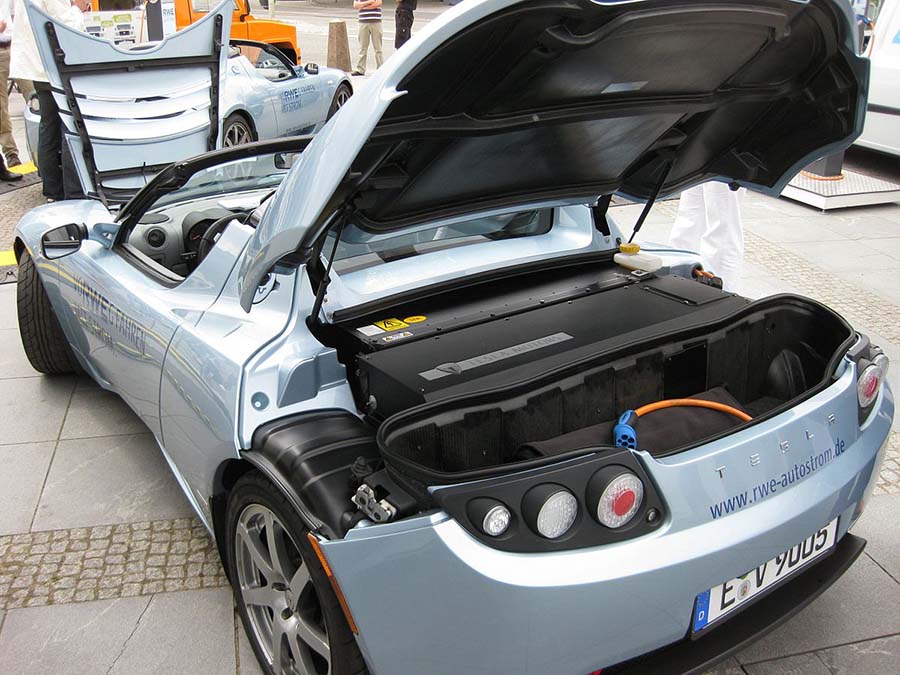
The high range despite only 56 kilowatt hours of energy content – which corresponds to the calorific value of a good 6 liters of petrol – is possible because electric motors are more efficient than internal combustion engines, which emit the chemically bound energy of the fuel for the most part (approx. 75%) as heat, instead of converting them into motion (25% efficiency in internal combustion engines, > 94% in electric motors ). In addition, the electric motor acts as a generator when braking and can thus recover part of the acceleration energy used. This saves energy, especially when driving around town.
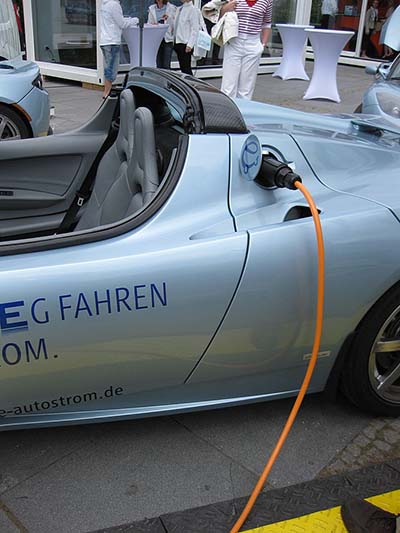
The Roadster charger can only charge in one phase. The charging time for a Tesla High Power Wall Connector (HPC) with 70A is four hours, for a three-phase CEE socket with 32 amps, is about eight hours, whereby only one phase is used. If only a 230 V 16 A Schuko socket is available, which may only be loaded with 10A continuously, a complete charging cycle takes about 24 hours.
On December 26, 2014, Tesla announced that there would be an upgrade kit for the Roadster. The car manufacturer then calls the modified Stromer Roadster 3.0; Part of the optimization is that the battery will be 70 kWh.
Life and cycle stability
Plug in America conducted a survey of the lifespan of the batteries used among drivers of the Tesla Roadster. The result was that the batteries still had a capacity of 80 to 85 percent after 100,000 miles (approx. 160,000 km). This was irrespective of the climatic zone in which the vehicle was driven.
Energy Efficiency
The average energy requirement is 457.2 kJ/km, based on the energy content of motor gasoline, this corresponds to 1.49 liters per 100 km. The vehicle itself is emission- free, but CO2 and other pollutants can be released when generating electricity, depending on the type of electricity generation.
The manufacturer’s website states an energy efficiency including energy supply and generation (well-to-wheel = source to wheel) of 1.14 km/MJ. This corresponds to vehicles with a consumption of around 2.2 liters of petrol or diesel or 1.5 kg of natural gas (H gas) per 100 km. The supply and generation of electrical energy from natural gas is assumed to have an efficiency (well-to-station = source to petrol station) of 52.5%, the well-to-station efficiency for diesel with 90.1%, gasoline with 81, 7% and natural gas with 86%.
Criticism
The promised durability of the battery pack was viewed with great skepticism, especially by representatives of large automobile manufacturers, because, in their opinion, lithium-ion batteries did not have a sufficient lifespan for use in a motor vehicle. However, Tesla is of the opinion that it is extreme temperatures that cause batteries to age quickly, namely cold temperatures in cell phones and heat in laptops. That is why the battery block of the Tesla Roadster is constantly flushed with tempered liquid, which should ensure optimal temperatures of 18 to 25 ° C. In May 2011, a driver reached 100,000 km with his Tesla Roadster and a year later even a further 200,000 km, which is regarded as an indication of sufficient battery life.
Costs and production
The price of the basic equipment of the car was $109,000. A full charge of the battery pack (for a range of approximately 350 km) cost about two to three US dollars in 2008 according to US prices.
In the beginning, 2000 units per year were to be manufactured at the Lotus plant in Hethel in Great Britain. Production started on March 17, 2008. Interested parties could put themselves on a waiting list on Tesla’s website for a deposit of $60,000 (€50,000 in Europe).
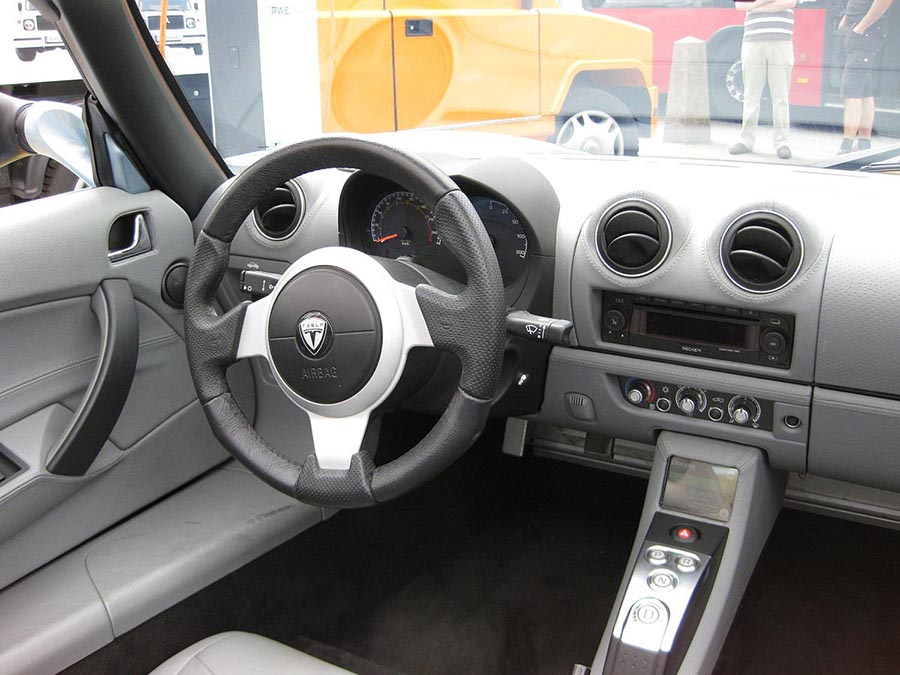
After the Roadster was initially only offered in North America, it has also been available in Europe since May 2009. For this purpose, a special edition Signature Edition limited to 250 units was created at a price of at least 117,810 euros. The European model had a more powerful engine, a modified transmission, special dampers and special wheels.
At the end of 2012, production of the roadster was discontinued and production of the Tesla Model S started.
Successor
In 2017, Elon Musk announced a successor to the Roadster. This will also be called Roadster and is said to break several electric car records. At 400 km/h, the roadster is to become the world’s fastest electric car, accelerate from 0 to 60 mph (97 km/h) within 1.9 seconds and have a range of 1000 kilometers.
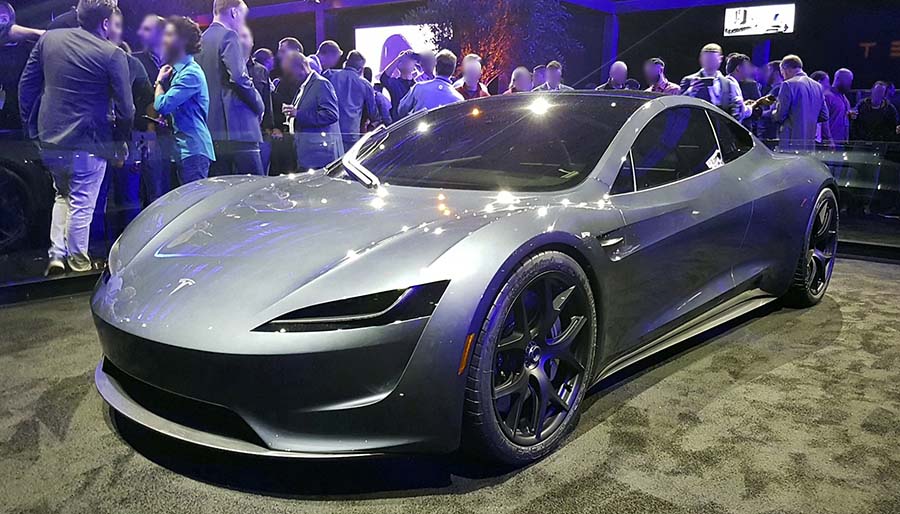
Trivia
In February 2018, a cherry red Tesla Roadster owned by Elon Musk was shot into orbit around the sun on the maiden flight of the Falcon Heavy rocket in its hold, where Mars is also to be passed. The vehicle served as a payload simulator, as the success of the mission is uncertain and no precious cargo such as a satellite should be promoted. A concrete block is usually used for this. In the vehicle, a life-size doll with a space suit was placed in the driver’s seat, based on the song Starman by David Bowie.
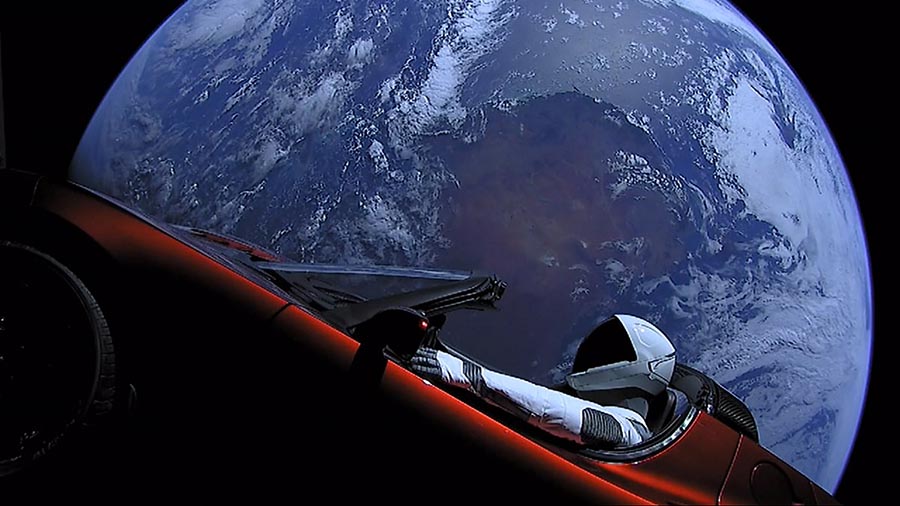










I love Teslas
I like super cars.